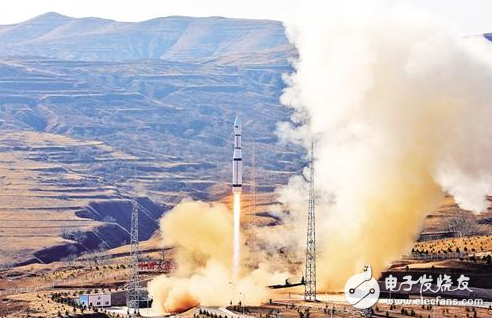The "Jilin No. 1" video satellites 04, 05, and 06 were independently developed by Changguang Satellite Technology Co., Ltd. These satellites were launched aboard the Long March 6 rocket from the Taiyuan Satellite Launch Center in China. On November 21st at 12:50, the successful launch of the Jilin No. 1 video 04, 05, and 06 satellites marked a significant milestone for China's commercial space industry.
According to long-term plans, the Long March series of rockets is expected to offer a wide range of commercial launch services globally by 2020. By that time, users could access services such as “space shuttle†missions. Around 2025, suborbital space tourism is anticipated to become a reality, with commercial aerospace evolving into a comprehensive system that includes ground experiences, commercial launches, space tourism, and orbital services. China’s space commercialization is rapidly advancing.

On November 21st, China’s new-generation Long March 6 rocket was successfully launched from Taiyuan, marking its first commercial mission. This event follows the release of the "2017–2045 Space Transportation System Development Roadmap" by the China Aerospace Science and Technology Corporation, which outlines the future direction of China's commercial space industry.
**Accelerating International Market Expansion**
Lei Fanpei, chairman of the China Aerospace Science and Technology Corporation, highlighted that the aerospace industry has a high return on investment, with a direct input-output ratio of about 1:2 in Europe and the U.S. The indirect impact on related industries can be as high as 1:7 to 1:14. While China’s aerospace industry lags slightly behind, it still has room for growth. The cost of Long March rockets is competitive, and their high success rate is highly regarded by the international insurance industry.
To date, the Long March rockets have provided 60 commercial launches, including 14 foreign satellite launches. With reliability and reputation, they are well-regarded in the global market. In recent years, China has expanded its commercial space presence internationally. For example, in 2012, Venezuela received its remote sensing satellite, marking a breakthrough in China’s remote sensing satellite exports. In 2015, Laos’ first communication satellite was launched, representing China’s first export to ASEAN. In 2016, the Belarusian communications satellite opened up the European market for China. In 2017, China’s domestic communication satellites entered Indonesia for the first time.
China is currently developing marine launch technology for international customers, with key technologies expected to be tested this year. Next year, the country aims to provide marine launch services globally.
**Continuous Improvement in Service Capabilities**
By 2020, the Long March series will reach international first-class standards. The Long March 8, a low-cost medium-sized rocket, will make its debut, while existing rockets will undergo intelligent upgrades. Commercial solid and liquid rockets will offer diverse services, such as “space shuttle,†“space taxi,†and “VIP private car†options. Around 2025, reusable suborbital carriers will be developed, making suborbital space tourism a reality.
China has now developed 17 types of Long March rockets, capable of launching satellites and spacecraft to any Earth orbit, as well as supporting lunar and deep-space exploration. By 2045, China’s space transportation system is expected to lead globally, with strong international competitiveness and innovation capabilities.
The company can develop micro-satellites (kilograms to tens of kilograms), small satellites (hundreds of kilograms), and medium-to-large satellites (thousands of kilograms) tailored to user needs, offering services in communications, navigation, remote sensing, and space science.
In terms of system solutions, the company continues to expand its business models to meet individual user demands. Projects like the Belarusian communication satellite provide full-service solutions, covering satellite development, launch, ground systems, and training.
In communication satellite operations, the company provides 321 TV channels and 316 broadcast programs. Its Ka-band broadband satellite system will be operational by year-end, with a capacity of 20 Gbps. China’s communication satellites offer fast networking, high-speed access, wide coverage, large capacity, and low cost, reaching international standards.
In remote sensing, the 4D company under the group launched two 0.5m resolution commercial satellites, accelerating data development and building a global high-precision Earth observation system. This aims to create an internationally competitive geographic information operator.
**Exploring Military-Civilian Integration**
Currently, over 2,000 aerospace technologies have been applied in China’s economy and society. The company is expanding aerospace applications and industrial chains, focusing on satellite integration, communication services, and geographic information. It has also introduced smart city solutions, such as the social governance cloud platform in Foshan City.
Lei Fanpei noted that while China has made progress in aerospace, there is still a gap compared to leading space powers. By 2030, the goal is to increase China’s world-class aerospace technology index from 30% to 60%, placing it among the top aerospace nations. By 2045, China aims to become a global space power.
“We will continue to transform aerospace manufacturing and management models, promote the application of aerospace technology to the national economy, and build a more open, cooperative, and win-win aerospace industry system,†Lei said.
Photovoltaic Bracket,supporting structure ground solar,ground solar mounting structure,solar mounting structure,solar ground mount
Hebei Shuobiao New Energy Technology Co., Ltd. , https://www.pvbracketsystem.com